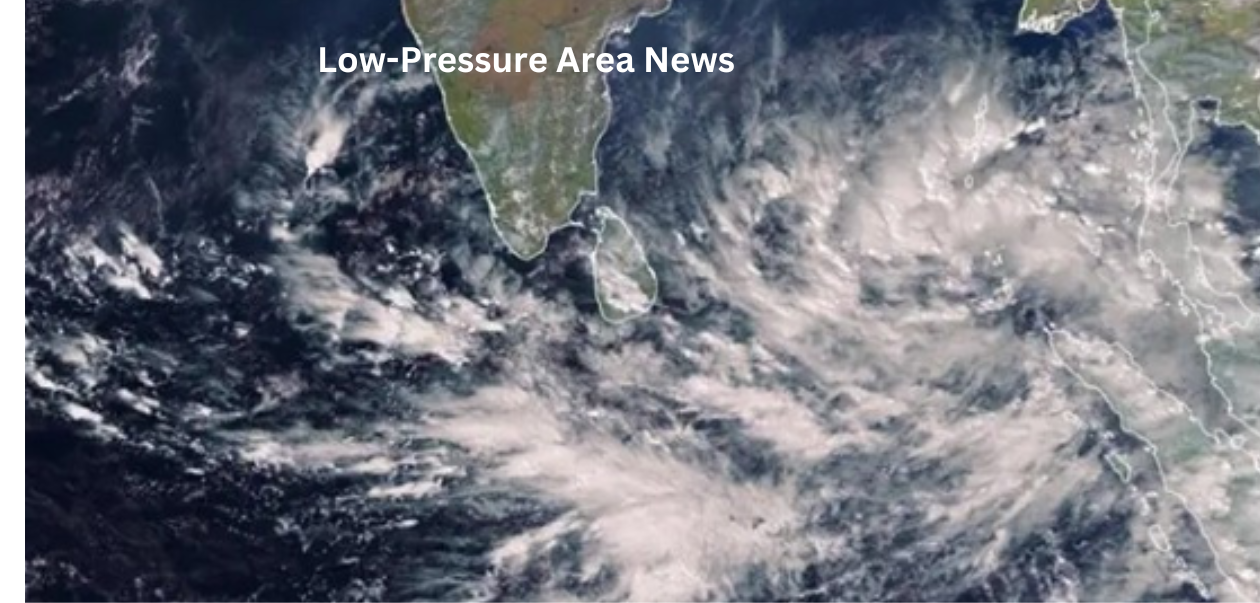Introduction to Low-Pressure Area News
The term “low-pressure area news” has become increasingly prominent in weather reports and disaster updates worldwide. As these systems influence various weather patterns, their development and movement significantly affect daily life and global climate trends.
Understanding low-pressure areas is crucial for anticipating weather changes, preparing for potential hazards, and appreciating the dynamic forces shaping our atmosphere.
What Is a Low-Pressure Area?
A low-pressure area is a region in the atmosphere where the pressure is lower than the surrounding environment. These systems form when warm air rises from the Earth’s surface, creating a void that draws in surrounding air.
Critical Characteristics of Low-Pressure Areas:
- Air Movement: Warm air rises, and cooler air rushes in, causing wind patterns.
- Cloud Formation: Rising air cools and condenses, forming clouds and often precipitation.
- Pressure Gradients: Isobars on weather maps indicate lower pressure toward the center.
These systems are fundamental to weather dynamics, influencing rainfall, storms, and even extreme phenomena such as cyclones.
How Low-Pressure Systems Develop
Low-pressure systems originate from a combination of atmospheric and geographical factors.
- Temperature Differences
- When warm and cold air masses collide, the difference in temperature causes instability. Warm air rises while colder air sinks, setting the stage for a low-pressure area.
- Geographical Influences
- Coastal regions, mountains, and valleys can enhance the development of these systems by altering airflows and pressure gradients.
- The Coriolis Effect
- Earth’s rotation causes the air within low-pressure systems to spiral, leading to the characteristic counterclockwise movement in the Northern Hemisphere and clockwise in the Southern Hemisphere.
Weather Effects Associated with Low-Pressure Areas
Low-pressure systems can produce various weather events depending on their intensity and location.
Common Weather Effects:
- Rainfall: These systems often bring sustained rainfall, flooding vulnerable areas.
- Storms: Severe systems can evolve into tropical storms or cyclones, unleashing destructive winds.
- Temperature Variations: By pulling in air from different regions, these systems can cause sudden temperature changes.
Seasonal Impacts:
- Winter: Low-pressure systems often result in heavy snowfall and blizzards in colder regions.
- Summer: These systems are a precursor to hurricanes and typhoons in tropical zones.
Notable Low-Pressure Systems in Recent History
Several low-pressure systems have made headlines for their significant impacts.
- Hurricane Katrina (2005)
- Originating as a low-pressure area, Katrina evolved into one of the most devastating hurricanes in U.S. history, highlighting the potential severity of these systems.
- Cyclone Amphan (2020)
- A low-pressure area over the Bay of Bengal intensified into a supercyclone, affecting millions in India and Bangladesh.
- European Windstorms
- Regularly forming over the Atlantic, these low-pressure systems bring strong winds and heavy rain to parts of Europe.
Global and Regional Implications
Low-pressure systems influence weather patterns on both local and global scales.
Regional Effects:
- Tropical Regions: These systems are more frequent and intense, leading to monsoons and tropical storms.
- Polar Areas: They play a role in shifting polar air masses, affecting weather in lower latitudes.
Global Climate Connections:
Low-pressure systems contribute to heat and moisture redistribution, which is vital to Earth’s climate balance. Their behavior also provides valuable insights into trends related to climate change.
Tracking and Forecasting Low-Pressure Systems
Advancements in meteorology have significantly improved the ability to monitor and predict low-pressure systems.
Tools for Tracking:
- Satellite Imagery: Provides real-time visuals of cloud cover and storm development.
- Doppler Radar: Measures precipitation intensity and wind speeds within systems.
- Weather Models: Computer simulations forecast the trajectory and impact of systems.
These tools allow governments and communities to prepare for potential hazards, minimizing the impact of extreme weather.
How to Stay Safe During Low-Pressure Weather Events
Preparation and awareness are essential for staying safe during weather events influenced by low-pressure areas.
Safety Tips:
- Monitor Weather Updates
- Stay informed through reliable sources for the latest forecasts and warnings.
- Prepare Emergency Supplies
- Keep essentials such as water, food, and flashlights ready in case of power outages or evacuations.
- Secure Property
- Reinforce structures and transparent drainage systems to reduce risks from strong winds or flooding.
- Avoid Non-Essential Travel
- Severe weather can make roads dangerous and disrupt transportation.
Frequently Asked Questions About Low-Pressure Area News
What makes a low-pressure system different from a high-pressure system?
Low-pressure systems involve rising warm air, leading to cloud formation and precipitation. High-pressure systems feature sinking cool air, resulting in clear skies and stable conditions.
How do low-pressure systems affect agriculture?
They bring much-needed rainfall to certain areas, which can benefit crops. However, excessive rain or storms can damage agricultural output.
Are all low-pressure systems dangerous?
Not all systems are harmful. Their impact depends on factors such as intensity, duration, and location.
How can I track a low-pressure system in my area?
Use reliable weather apps, satellite data, and updates from meteorological agencies for accurate information.
Why are low-pressure systems critical for climate stability?
These systems help regulate heat and moisture distribution, contributing to Earth’s climate balance.
Low-pressure areas are a cornerstone of weather and climate dynamics, shaping everything from daily forecasts to extreme weather events. Staying informed about their development and potential impacts helps individuals and communities adapt to an ever-changing atmosphere.










Leave a Reply